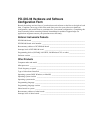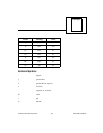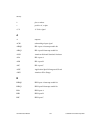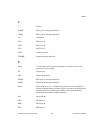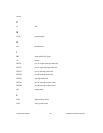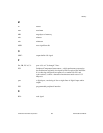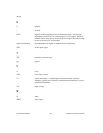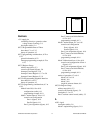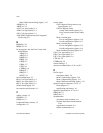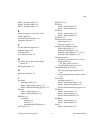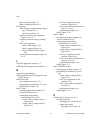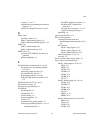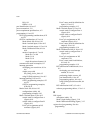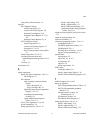
Index
PCI-DIO-96 User Manual I -6
©
National Instruments Corporation
I/O, 6-19
OBFA*, 6-18
port identification, 6-6 to 6-7
power connections, 3-8
power requirement specifications, A-2
programming, 6-1 to 6-23
82C53 programming considerations, 6-22
to 6-23
82C55A considerations, 6-7 to 6-8
Mode 0 basic I/O, 6-8 to 6-10
Mode 1 strobed input, 6-10 to 6-13
Mode 1 strobed output, 6-13 to 6-16
Mode 2 bidirectional bus, 6-16 to
6-19
modes of operation, 6-7 to 6-8
Mode 0, 6-7 to 6-8
Mode 1, 6-8
Mode 2, 6-8
single bit set/reset feature, 6-8
common terms used in examples, 6-2
interrupt generation
developing your own driver, 6-5 to
6-6
simple access with
Get_DAQ_device_Info, 6-5
using NI-DAQ software, 6-4 to 6-5
interrupt handling, 6-20 to 6-21
82C53 programming example, 6-22
to 6-23
82C55A programming examples,
6-20 to 6-21
Mode 0 basic I/O, 6-8 to 6-10
configurations (table), 6-9
programming example, 6-10
Mode 1 strobed input, 6-10 to 6-13
control word to configure Port A
(figure), 6-10
control word to configure Port B
(figure), 6-11
Port C pin assignments on I/O
connector (figure), 6-13
Port C status-word bit definitions for
input, 6-12 to 6-13
programming example, 6-13
Mode 1 strobed output, 6-13 to 6-16
control word to configure Port A
(figure), 6-14
control word to configure Port B
(figure), 6-14
Port C pin assignments on I/O
connector (figure), 6-16
Port C status-word bit definitions for
output, 6-15 to 6-16
programming example, 6-16
Mode 2 bidirectional bus, 6-16 to 6-19
control word to configure Port A
(figure), 6-17
Port C pin assignments on I/O
connector, 6-19
Port C status-word bit definitions,
6-18 to 6-19
programming example, 6-19
PCI initialization for Macintosh, 6-4 to
6-5
developing your own interrupt
method, 6-5 to 6-6
performing simple accesses, 6-5
port identification, 6-6 to 6-7
programming options, 6-4 to 6-6
using NI-DAQ and driver toolkit, 6-4
to 6-5
PCI initialization for PC, 6-3 to 6-4
software programming choices, 1-2 to 1-4
R
RD* signal
description (table), 3-9
Mode 1 input timing (figure), 3-10
Mode 2 bidirectional timing (figure), 3-12
register-level programming. See also
programming.



